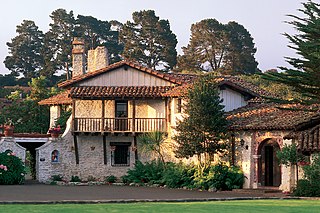
Monterey is a city in Monterey County on the southern edge of Monterey Bay on the U.S. state of California's Central Coast. Founded on June 3, 1770, Monterey was the second permanent settlement established by Spanish explorers in what is now California. It functioned as the capital of Alta California under both Spain (1804–1821) and Mexico (1822–1846). During this period, Monterey hosted California's first theater, public building, public library, publicly funded school, printing press, and newspaper. It was originally the only port of entry for all taxable goods in California. In 1846, during the Mexican–American War of 1846–1848, the United States Flag was raised over the Customs House. After Mexico ceded California to the U.S. at the end of the war, Monterey hosted California's first constitutional convention in 1849.
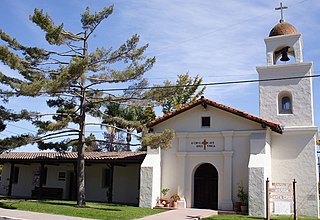
Mission Santa Cruz is a Spanish Californian mission. Located on Mission Hill, it was founded on August 28, 1791, by Father Fermín Francisco de Lasuén, the successor of Father Junipero Serra. The mission was dedicated that same year. The present mission chapel building is a replica located near the original site, on which Holy Cross Church now stands.

Santa Cruz is the largest city and the county seat of Santa Cruz County, in Northern California. As of the 2020 census, the city population was 62,956. Situated on the northern edge of Monterey Bay, Santa Cruz is a popular tourist destination, owing to its beaches, surf culture, and historic landmarks.
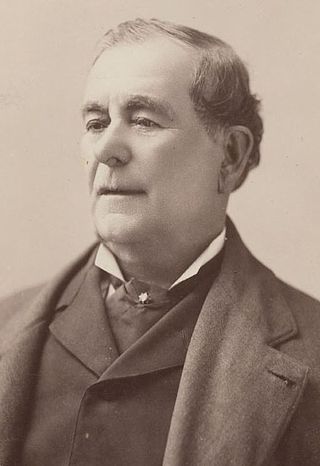
Don Mariano Guadalupe Vallejo was a Californio general, statesman, and public figure. He was born a subject of Spain, performed his military duties as an officer of the Republic of Mexico, and shaped the transition of Alta California from a territory of Mexico to the U.S. state of California. He served in the first session of the California State Senate. The city of Vallejo, California, is named after him, and the nearby city of Benicia is named after his wife.

Juan Bautista Valentín Alvarado y Vallejo usually known as Juan Bautista Alvarado, was a Californio politician that served as Governor of Alta California from 1837 to 1842. Prior to his term as governor, Alvarado briefly led a movement for independence of Alta California from 1836 to 1837, in which he successfully deposed interim governor Nicolás Gutiérrez, declared independence, and created a new flag and constitution, before negotiating an agreement with the Mexican government resulting in his recognition as governor and the end of the independence movement.

Monterey State Historic Park is a historic state park in Monterey, California. It includes part or all of the Monterey Old Town Historic District, a historic district that includes 17 contributing buildings and was declared a National Historic Landmark in 1970. The grounds include California's first theatre, and the Monterey Custom House, where the American flag was first raised over California.

Thomas Oliver Larkin, known later in life in Spanish as Don Tomás Larquin, was an American diplomat and businessman.

José Antonio Castro was a Californio politician, statesman, and general who served as interim Governor of Alta California and later Governor of Baja California. During the Bear Flag Revolt and the American Conquest of California, Castro led Mexican forces as the Commandante General of Northern California.

Rancho Petaluma Adobe is a historic ranch house in Sonoma County, California. It was built from adobe bricks in 1836 by order of Mariano Guadalupe Vallejo. It was the largest privately owned adobe structure built in California and is the largest example of the Monterey Colonial style of architecture in the United States. A section of the former ranch has been preserved by the Petaluma Adobe State Historic Park and it is both a California Historic Landmark and a National Historic Landmark. The Rancho Petaluma Adobe State Historic Park is located on Adobe Road on the east side of the present-day town of Petaluma, California.

The House of the Four Winds, or La Casa de Los Vientos, is a historic adobe building located at 540 Calle Principal in Monterey, California. It was built by Thomas O. Larkin in 1834. The house acquired its named because of the weather vane on its hipped roof. The building was used as the first State of California Hall of Records. Today it is used as the clubhouse for the Monterey Civic Club. The building is listed as a California Historical Landmark #353.
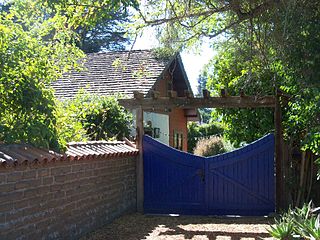
The Branciforte Adobe, also known as the Craig-Lorenzana Adobe, is the only remaining dwelling from the Villa de Branciforte, the settlement that was established in 1797 at the time of the Mission Santa Cruz.

José Joaquín Estudillo was a Californio statesman and ranchero who served as the 2nd Alcalde of San Francisco. A member of the prominent Estudillo family of California, he is also considered the founder of the city of San Leandro.
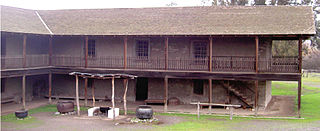
Monterey Colonial is an architectural style developed in Alta California. Although usually categorized as a sub-style of Spanish Colonial style, the Monterey style is native to the post-colonial Mexican era of Alta California. Creators of the Monterey style were mostly recent immigrants from New England states of the US, who brought familiar vernacular building styles and methods with them to California.
Rancho El Rincón was a 4,431-acre (17.93 km2) Mexican land grant in present-day San Bernardino County and Riverside County, California given in 1839 to Juan Bandini by Governor Juan Alvarado. El rincón means "the corner" in Spanish. The grant, located south of present-day Chino, was bounded on the east by Rancho Jurupa, on the south by the Santa Ana River, on the west by Rancho Cañón de Santa Ana, and extending northerly from the river one league. The rancho lands include Prado Regional Park.

Juan Bautista Rogers Cooper was a 19th-century pioneer of California, who held British, Mexican, and finally American citizenship. Raised in Massachusetts in a maritime family, he came to the Mexican territory of Alta California as master of the ship Rover, and was a pioneer of Monterey, California, when it was the capital of the territory. He converted to Catholicism, became a Mexican citizen, married the daughter of the Mexican territorial governor, and acquired extensive land holdings in the area prior to the Mexican–American War.

Rancho Punta del Año Nuevo was a 17,753-acre (71.84 km2) Mexican land grant in present day San Mateo County, California given in 1842 by Governor Juan B. Alvarado to Simeon Castro. At the time, the grant was in Santa Cruz County; an 1868 boundary adjustment gave the land to San Mateo County. The grant extended along the Pacific coast from Rancho Butano and Arroyo de los Frijoles on the north, past Pigeon Point, Franklin Point to Point Año Nuevo on the south.

The Jose Eusebio Boronda Adobe is a Monterey Colonial style building from 1846, located in Salinas, Monterey County, California. The adobe was listed on the National Register of Historic Places on March 20, 1973, and is California Historical Landmark #870.

José Abrego was a 19th-century Californian merchant. He arrived in Alta California in 1834 as a member of Compania Cosmopolitan A, part of the Hijar-Padrés colony. It was led by José Maria Hijar and Don José Maria Padrés. Abrego became a merchant in Monterey, California, and held a variety of political offices. He served as treasurer of the territory from 1839 to 1846. After the Mexican–American War, he continued to operate as a merchant. He became very wealthy and built a home that is still preserved in Monterey.
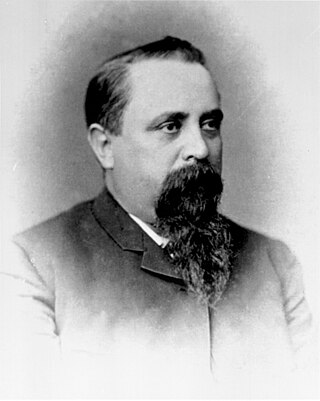
The Sepúlveda family is a prominent Californio family of Southern California. Members of the family held extensive rancho grants and numerous important positions, including Alcalde de Los Ángeles, California State Assemblymen, and Los Angeles County Supervisor.





















